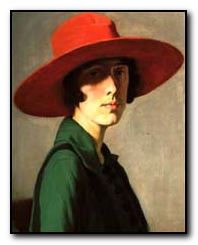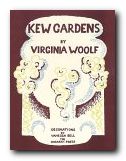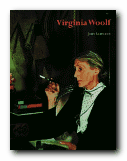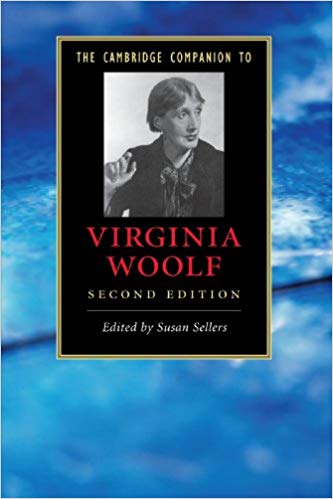tutorial, commentary, study resources, plot, and web links
A Simple Melody was probably written around 1925 and is one of a number of short stories by Virginia Woolf set at a party in the Westminster home of Richard and Clarissa Dalloway, the hosts of the central social event in her novel Mrs Dalloway (1925).
John Crome 1768-1821
A Simple Melody – critical commentary
The narrative is presented almost entirely from George Carslake’s point of view, with no authorial comment to cast any interpretive light on how his character might be viewed. Certainly, like all the other guests who feature in these Mrs Dalloway’s Party sketches, he is locked into his own thoughts in an entirely solipsistic manner. He doesn’t engage with any of the other guests at all – except in his imagination.
And even though he comes close to serious topics for reflection, such as the nature of religious belief, his musings are on the whole completely banal, escapist, and trivial. He is searching for over-simplified explanations of social phenomena which he finds threatening.
One of the most interesting secondary aspects of the story is that it features cameo appearances of characters from the other short sketches in the Mrs Dalloway’s Party sequence.
Prickett Ellis, the middle-aged solicitor from The Man who Loved his Kind, appears as ‘that angry looking chap with the toothbrush moustache’, and as he glances round the room, George Carslake sees Mabel Waring, the central figure from The New Dress:
Just as he was thinking this, he saw Mabel Waring going away, in her pretty yellow dress. She looked agitated, with a strained expression and fixed unhappy eyes for all she tried to look animated.
We know from that story that Mabel Waring feels her new yellow dress is a fashion choice disaster which has resulted in her social humiliation, yet Carslake thinks of it as ‘pretty’, which confirms that her agitation is a self-induced sense of insecurity.
Similarly, he spots Stuart Elton, the protagonist of Happiness, another character who is self-absorbed, disatends to the people around him, and is alienated by his own egoism. Yet George Carslake sees him quite differently:
Mr Carslake saw him [Stuart Elton] standing alone lifting a paper knife up in his hands and looking at it in a very strange way … For underneath, though people seeing him casually would never believe it, Stuart was the gentlest, simplest of creatures, content to ramble all day with quite undistinguished people, like himself …
This poses an interpretive problem. The separate story Happiness establishes Stuart Elton as vain, rude, and emotionally costive. So – do we take George Carslake’s reading of him as accurate? – or does it reflect a limitation in Carslake’s understanding of other people?
The possible solution to this conundrum is to recognise that there is always a potential mismatch between what people think about themselves and how they are perceived by others.
A Simple Melody – study resources
![]() The Complete Shorter Fiction – Vintage Classics – Amazon UK
The Complete Shorter Fiction – Vintage Classics – Amazon UK
![]() The Complete Shorter Fiction – Vintage Classics – Amazon US
The Complete Shorter Fiction – Vintage Classics – Amazon US
![]() The Complete Shorter Fiction – Harcourt edition – Amazon UK
The Complete Shorter Fiction – Harcourt edition – Amazon UK
![]() The Complete Shorter Fiction – Harcourt edition – Amazon US
The Complete Shorter Fiction – Harcourt edition – Amazon US
![]() Monday or Tuesday and Other Stories – Gutenberg.org
Monday or Tuesday and Other Stories – Gutenberg.org
![]() Kew Gardens and Other Stories – Hogarth reprint – Amazon UK
Kew Gardens and Other Stories – Hogarth reprint – Amazon UK
![]() Kew Gardens and Other Stories – Hogarth reprint – Amazon US
Kew Gardens and Other Stories – Hogarth reprint – Amazon US
![]() The Mark on the Wall – Oxford World Classics edition – Amazon UK
The Mark on the Wall – Oxford World Classics edition – Amazon UK
![]() The Mark on the Wall – Oxford World Classics edition – Amazon US
The Mark on the Wall – Oxford World Classics edition – Amazon US
![]() The Complete Works of Virginia Woolf – Kindle edition
The Complete Works of Virginia Woolf – Kindle edition
![]() The Cambridge Companion to Virginia Woolf – Amazon UK
The Cambridge Companion to Virginia Woolf – Amazon UK
![]() Virginia Woolf – Authors in Context – Amazon UK
Virginia Woolf – Authors in Context – Amazon UK
![]() The Cambridge Introduction to Virginia Woolf – Amazon UK
The Cambridge Introduction to Virginia Woolf – Amazon UK
A Simple Melody – story synopsis
George Carslake, a bachelor barrister, is in the company of Miss Merewether at Clarissa Dalloway’s party, and is comforting himself by regarding a genre painting of a heath on the wall. He fantasises about walking back to Norwich with Queen Mary and some of the people at the party, his thoughts rambling inconsequently over what they might talk about. He generalises about religious belief and seems to be searching for a sense of communication in order to escape his feelings of emptiness and isolation.
To the other guests he appears to be alert and gracefully composed, but in fact his thoughts are riven with uncertainties, and whilst he is physically present in the drawing room, his mind is elsewhere – walking back to Norwich. He wants to comfort himself with the idea that all people are essentially the same, but he cannot escape the realisation that all social interaction reveals differences.
A Simple Melody – characters
| George Carslake | a bachelor barrister |
| Miss Merewether | a guest at Mrs Dalloway’s party |
Further reading
![]() Quentin Bell. Virginia Woolf: A Biography. New York: Harcourt Brace Jovanovich, 1972.
Quentin Bell. Virginia Woolf: A Biography. New York: Harcourt Brace Jovanovich, 1972.
![]() Hermione Lee. Virginia Woolf. New York: Alfred A. Knopf, 1997.
Hermione Lee. Virginia Woolf. New York: Alfred A. Knopf, 1997.
![]() Nicholas Marsh. Virginia Woolf, the Novels. New York: St. Martin’s Press, 1998.
Nicholas Marsh. Virginia Woolf, the Novels. New York: St. Martin’s Press, 1998.
![]() John Mepham, Virginia Woolf. New York: St. Martin’s Press, 1992.
John Mepham, Virginia Woolf. New York: St. Martin’s Press, 1992.
![]() Natalya Reinhold, ed. Woolf Across Cultures. New York: Pace University Press, 2004.
Natalya Reinhold, ed. Woolf Across Cultures. New York: Pace University Press, 2004.
![]() Michael Rosenthal, Virginia Woolf: A Critical Study. New York: Columbia University Press, 1979.
Michael Rosenthal, Virginia Woolf: A Critical Study. New York: Columbia University Press, 1979.
![]() Susan Sellers, The Cambridge Companion to Virginia Woolf, Cambridge University Press, 2010.
Susan Sellers, The Cambridge Companion to Virginia Woolf, Cambridge University Press, 2010.
![]() Virginia Woolf, The Common Reader. New York: Harvest Books, 2002.
Virginia Woolf, The Common Reader. New York: Harvest Books, 2002.
![]() Alex Zwerdling, Virginia Woolf and the Real World. Berkeley: University of California Press, 1986.
Alex Zwerdling, Virginia Woolf and the Real World. Berkeley: University of California Press, 1986.
Other works by Virginia Woolf
 Orlando (1928) is one of her lesser-known novels, although it’s critical reputation has risen in recent years. It’s a delightful fantasy which features a character who changes sex part-way through the book – and lives from the sixteenth to the twentieth century. Using this device (which turns out to be strangely credible) Woolf explores issues of gender and identity as her hero-heroine moves through a variety of lives and personal adventures. Orlando starts out as an emissary to the Court of St James, lives through friendships with Swift and Alexander Pope, and ends up motoring through the west end of London on a shopping expedition in the 1920s. The character is loosely based on Vita Sackville-West, who at one time was Woolf’s lover. The novel itself was described by Nigel Nicolson (Sackville-West’s son) as ‘the longest and most charming love-letter in literature’.
Orlando (1928) is one of her lesser-known novels, although it’s critical reputation has risen in recent years. It’s a delightful fantasy which features a character who changes sex part-way through the book – and lives from the sixteenth to the twentieth century. Using this device (which turns out to be strangely credible) Woolf explores issues of gender and identity as her hero-heroine moves through a variety of lives and personal adventures. Orlando starts out as an emissary to the Court of St James, lives through friendships with Swift and Alexander Pope, and ends up motoring through the west end of London on a shopping expedition in the 1920s. The character is loosely based on Vita Sackville-West, who at one time was Woolf’s lover. The novel itself was described by Nigel Nicolson (Sackville-West’s son) as ‘the longest and most charming love-letter in literature’.
![]() Buy the book at Amazon UK
Buy the book at Amazon UK
![]() Buy the book at Amazon US
Buy the book at Amazon US
 Kew Gardens is a collection of experimental short stories in which Woolf tested out ideas and techniques which she then later incorporated into her novels. After Chekhov, they represent the most important development in the modern short story as a literary form. Incident and narrative are replaced by evocations of mood, poetic imagery, philosophic reflection, and subtleties of composition and structure. The shortest piece, ‘Monday or Tuesday’, is a one-page wonder of compression. This collection is a cornerstone of literary modernism. No other writer – with the possible exception of Nadine Gordimer, has taken the short story as a literary genre as far as this.
Kew Gardens is a collection of experimental short stories in which Woolf tested out ideas and techniques which she then later incorporated into her novels. After Chekhov, they represent the most important development in the modern short story as a literary form. Incident and narrative are replaced by evocations of mood, poetic imagery, philosophic reflection, and subtleties of composition and structure. The shortest piece, ‘Monday or Tuesday’, is a one-page wonder of compression. This collection is a cornerstone of literary modernism. No other writer – with the possible exception of Nadine Gordimer, has taken the short story as a literary genre as far as this.
![]() Buy the book at Amazon UK
Buy the book at Amazon UK
![]() Buy the book at Amazon US
Buy the book at Amazon US
 Virginia Woolf is a readable and well illustrated biography by John Lehmann, who at one point worked as her assistant and business partner at the Hogarth Press. It is described by the blurb as ‘A critical biography of Virginia Woolf containing illustrations that are a record of the Bloomsbury Group and the literary and artistic world that surrounded a writer who is immensely popular today’. This is an attractive and very accessible introduction to the subject which has been very popular with readers ever since it was first published..
Virginia Woolf is a readable and well illustrated biography by John Lehmann, who at one point worked as her assistant and business partner at the Hogarth Press. It is described by the blurb as ‘A critical biography of Virginia Woolf containing illustrations that are a record of the Bloomsbury Group and the literary and artistic world that surrounded a writer who is immensely popular today’. This is an attractive and very accessible introduction to the subject which has been very popular with readers ever since it was first published..
![]() Buy the book at Amazon UK
Buy the book at Amazon UK
![]() Buy the book at Amazon US
Buy the book at Amazon US
Virginia Woolf – web links
Virginia Woolf at Mantex
Biographical notes, study guides to the major works, book reviews, studies of the short stories, bibliographies, web links, study resources.
Blogging Woolf
Book reviews, Bloomsbury related issues, links, study resources, news of conferences, exhibitions, and events, regularly updated.
Virginia Woolf at Wikipedia
Full biography, social background, interpretation of her work, fiction and non-fiction publications, photograph albumns, list of biographies, and external web links
Virginia Woolf at Gutenberg
Selected eTexts of her novels and stories in a variety of digital formats.
Woolf Online
An electronic edition and commentary on To the Lighthouse with notes on its composition, revisions, and printing – plus relevant extracts from the diaries, essays, and letters.
Hyper-Concordance to Virginia Woolf
Search texts of all the major novels and essays, word by word – locate quotations, references, and individual terms
Orlando – Sally Potter’s film archive
The text and film script, production notes, casting, locations, set designs, publicity photos, video clips, costume designs, and interviews.
Women’s History Walk in Bloomsbury
Tour of literary and political homes in Bloomsbury – including Gordon Square, Gower Street, Bedford Square, Tavistock Square, plus links to women’s history web sites.
Virginia Woolf Society of Great Britain
Bulletins of events, annual lectures, society publications, and extensive links to Woolf and Bloomsbury related web sites
BBC Audio Essay – A Eulogy to Words
Charming sound recording of radio talk given by Virginia Woolf in 1937 – a podcast accompanied by a slideshow of photographs.
A Family Photograph Albumn
Leslie Stephen compiled a photograph album and wrote an epistolary memoir, known as the “Mausoleum Book,” to mourn the death of his wife, Julia, in 1895 – an archive at Smith College – Massachusetts
Virginia Woolf first editions
Hogarth Press book jacket covers of the first editions of Woolf’s novels, essays, and stories – largely designed by her sister, Vanessa Bell.
Virginia Woolf – on video
Biographical studies and documentary videos with comments on Virginia Woolf and the Bloomsbury Group and the social background of their times.
Virginia Woolf Miscellany
An archive of academic journal essays 2003—2014, featuring news items, book reviews, and full length studies.
© Roy Johnson 2014
More on Virginia Woolf
Virginia Woolf – short stories
Virginia Woolf – greatest works
Virginia Woolf – criticism
Virginia Woolf – life and works

